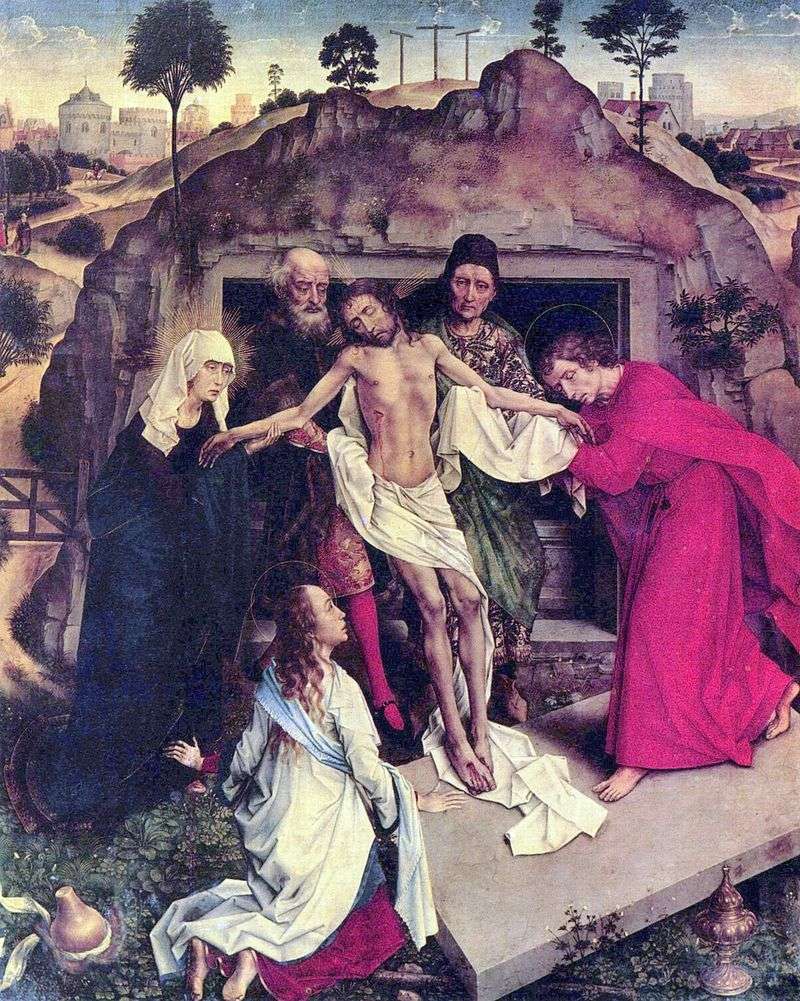
In his painting, Rogier van der Weyden, an artist of the early Dutch Renaissance, was able to portray different human sentiments. In the presented altar image, created, probably, during a trip to Italy, the painter conveyed a deep suffering and at the same time encased him in wondrous colors and lines.
Joseph of Arimathea and Nicodemus, hiding their spiritual state with all their strength, carry the evil and exhausted body of Christ to the tomb; John bent to kiss his hand; in disarray, Mary Magdalene knelt down, the Mother of God with a weary face gently supports the hand of the Son.
The strong religious feeling that drove the brush of Rogier van der Weyden, illuminates everything here, and that is why he, despite everything, gives the beauty of the dramatic scene. Elegant postures, for example John, are smooth gestures, pure colors, and the spirit captures from the sunlit landscape in the distance.
The French historian and philosopher Ippolit Than wrote about the Dutch artists of that time: “Pay attention to their unusually rich and bright colors, to clean and powerful colors… to the magnificent fractures of the purple robe, to the azure depressions of the long flowing clothes, to the draperies, like a meadow, permeated with sunlight… a mighty light that warms and gilds all the pictures… “
 Altar of St. John the Baptist by Rogier van der Weyden
Altar of St. John the Baptist by Rogier van der Weyden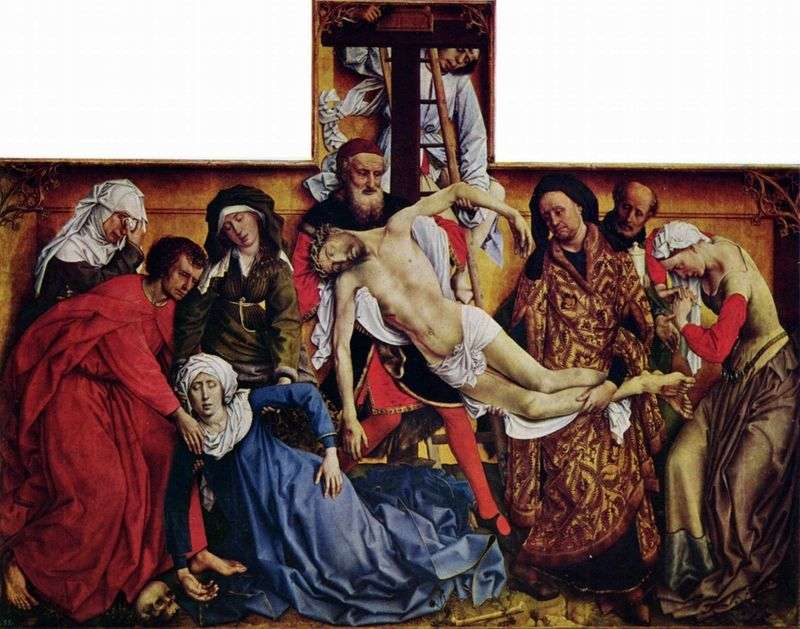 The removal from the cross by Rogier van der Weyden
The removal from the cross by Rogier van der Weyden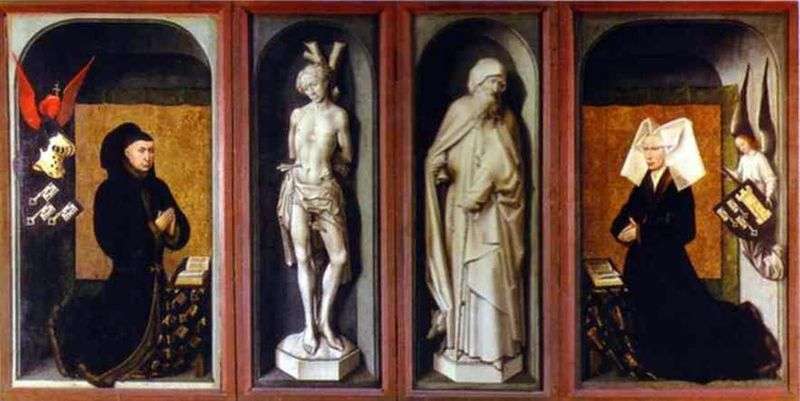 Portrait of Chancellor Rolen and his wife by Rogier van der Weyden
Portrait of Chancellor Rolen and his wife by Rogier van der Weyden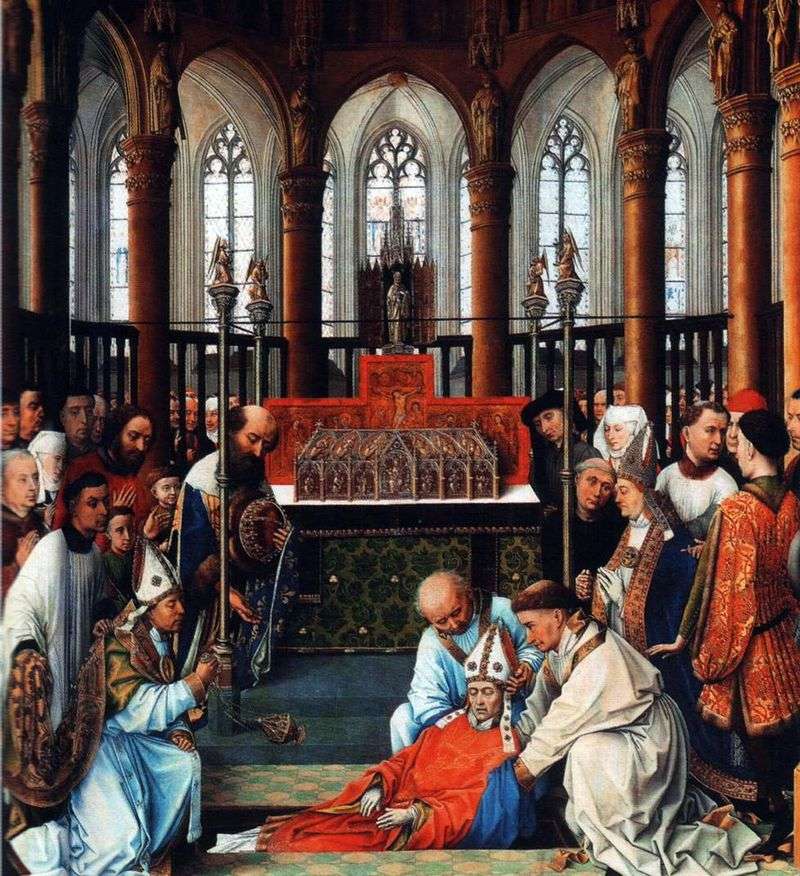 Discovering the Relics of St. Hubert by Rogier van der Weyden
Discovering the Relics of St. Hubert by Rogier van der Weyden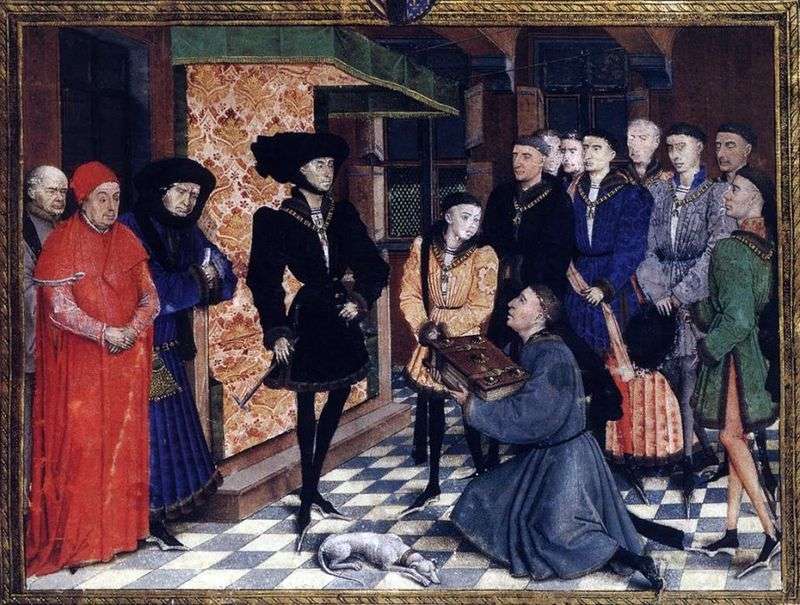 Chronicles of Hainaut by Rogier van der Weyden
Chronicles of Hainaut by Rogier van der Weyden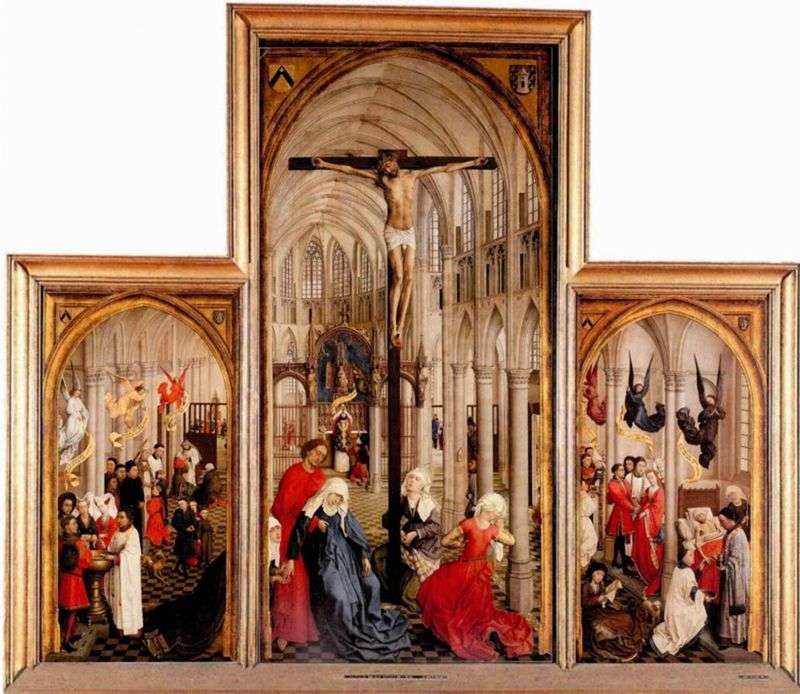 Triptych “The Seven Sacraments” by Rogier van der Weyden
Triptych “The Seven Sacraments” by Rogier van der Weyden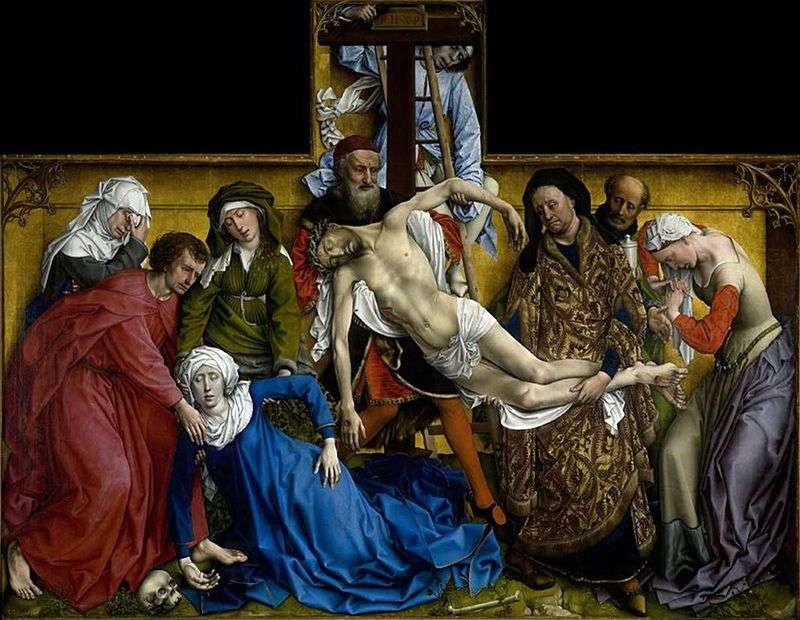 Cake Removal by Rogier van der Weyden
Cake Removal by Rogier van der Weyden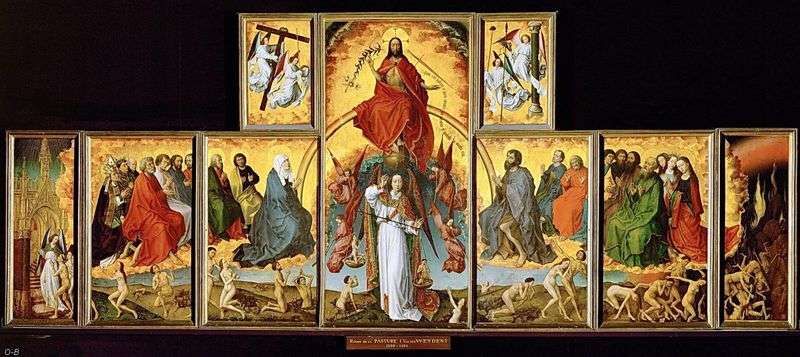 Polyptych “The Last Judgment” by Rogier van der Weyden
Polyptych “The Last Judgment” by Rogier van der Weyden